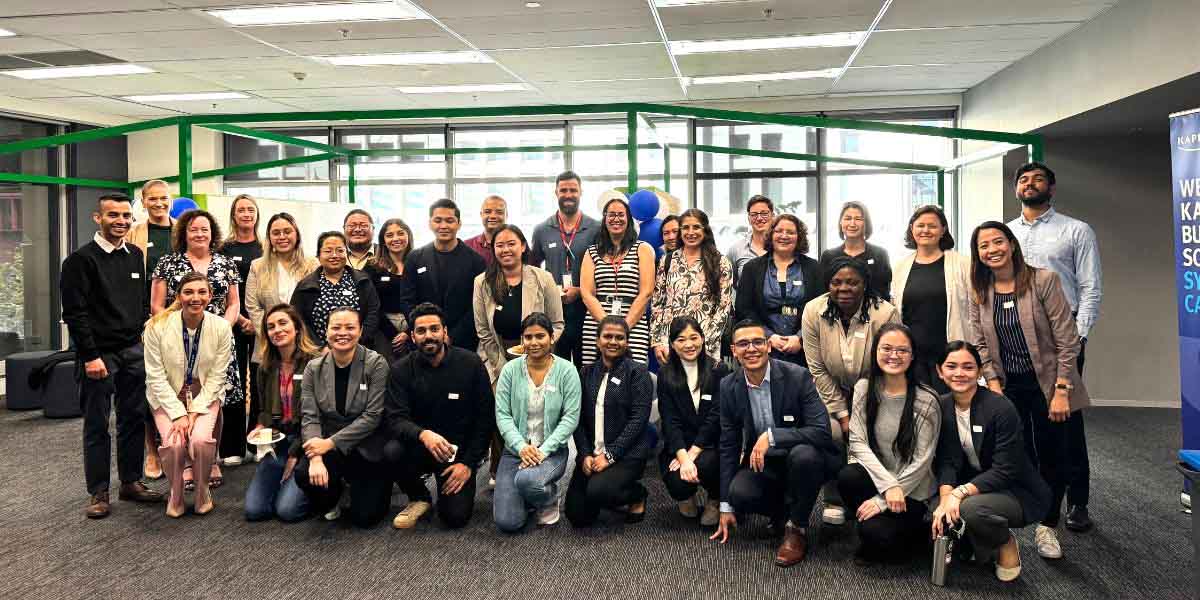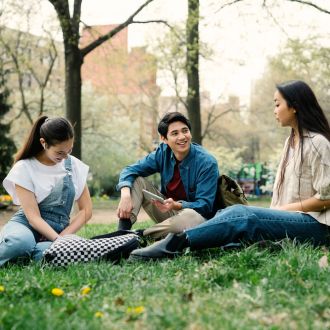How has teaching changed in the last 10 years?
We all learn in different ways, which is why one method of teaching in the classroom would not work for every student. Due to a greater focus (by many higher education providers) on student support and the adoption of new technology, the way we teach and learn has evolved from being teacher-centred and passive to being student-centred and active.
1. From passive to active

1.0 and 2.0 education
For a long time, lectures were relatively one-sided. Teachers spoke for the majority of the lesson, allowed little time for questions and students did not engage in discussions. This was known as 1.0 education (passive / teacher-centred). This formal way of learning was not effective for students who preferred more interaction or practical application. Therefore, 2.0 education introduced active learning elements such as student collaboration.
3.0 education
In the last 10 years, 3.0 education has been focused on student-centred teaching. Many programs are now based on the Universal Design for Learning which is a theory that if you design for a variety of learning experiences, then every student can understand, engage in and demonstrate what was taught.
Educational content now reflects different learning styles, suit a variety of capabilities, and allow students to learn at their own pace.
At Kaplan Business School (KBS), there are no lectures but workshops full of learning activities, discussions, case studies and interactive experiences.
With 3.0 education, teachers adopt a more nurturing approach, encouraging discussion, teamwork and answering as many questions as possible. They have resources to help students set learning goals, provide one-on-one assistance and timely feedback via learning management systems.
4.0 education
We have now entered 4.0 education, which - through the aid of technologies - requires educators to teach students how to find information and understand it.
2. From theory to practical skill development
Earlier course content focused heavily on theory and students lacked opportunities to apply their knowledge to real-world situations. This led to graduates feeling unprepared when they entered work.
Curriculum has been revised to include industry knowledge, practical skills development and careers-specific subjects. Many lecturers (who are often industry professionals) share their practical workplace knowledge with their students and develop assessments that focus on current industry issues and skills.
Today, many providers have a Careers Service team that offer students practical knowledge, tools and resources to help them better prepare for work after graduation. At KBS, students can even access help after they graduate via lifelong Career Coaching.
A balance of hard (technical) and soft skills (transferable)
Today, in addition to theory, there are opportunities to develop technical and transferable skills (e.g. critical thinking and data analysis) and emotional, social and adversity intelligence to better prepare students for their career.
Education technology platforms such as Practera help students gain industry skills in demand by connecting them to real-world projects and internships from a wide range of global businesses.
At KBS, all our courses teach transferable skills with IT and Analytics also offering hands on learning experiences.
3. From paper to digital
Course material, assessments, and progress reports were all provided on paper. With advances in technology and greater focus on sustainability, many schools have moved to digital platforms, resources and tools. This has led to better student support, engagement and new learning experiences.

Learning Management Systems
Advances in education technology are transforming the way we teach and learn. Many education providers have implemented learning management systems (LMS) to help deliver a more personalised learning environment. An LMS allows teachers to:
- Track their students’ progress in real time and provide feedback.
- Identify students who are struggling earlier in the semester.
- Offer new challenges to students who are excelling.
- Offer different choices for assignments.
- Use gamification to make learning fun and engaging. Game design features such as badges, points, rewards, and competitions capitalise on students’ natural desire for accomplishment and recognition. Gamification has been proven to increase student motivation and improve learning outcomes.
Through an LMS, students can directly ask their teachers questions instead of having to wait days for a consultation.
Online formats
Previously, students had to purchase expensive textbooks, borrow books from the library or read journal articles.
In addition to text resources, schools have created different online formats to cater for a range of learning styles such as audio files, quizzes, short-form videos, infographics, and webinars with subtitles.
Generative AI
The advancement in AI and robotics means that technology will create new jobs or change the way jobs are currently performed. Programs now provide early access to new software applications to help students better prepare for the digital age. More and more students are discovering study apps.
Schools have written Generative AI policies, educating students on the correct use of AI applications such as ChatGPT. With Gen AI, students can find information easily, so an educator’s job now will be to teach them how to understand and use the information correctly.
KBS has been at the forefront of integrating Gen AI into our curriculum due to our smaller size, which allows agility and speed in decision-making and actioning ideas.
Virtual tools
Virtual Reality has become an innovative and engaging method to help students gain practical industry experience. For example, a science student can conduct experiments in a simulated lab, or a medical student can get a close-up of how cells in a human body replicate.
Teachers can use digital whiteboards for collaborative learning and tools for advanced polling and analytics on learner participation.
4. From face-to-face to hybrid learning
Ten years ago, most lectures would have been taught face-to-face. Online learning was reserved for certain university courses and subjects. Due to the COVID-19 pandemic, online teaching and learning became widespread, accepted and necessary.
According to the Education Future Report, 70% of students describe their ideal learning situation as a hybrid one. They believe skills such as adaptability, organisation and time management are best developed in an online environment while communication and collaboration skills are best developed in the classroom.
Education Future Report
'70% of students describe their ideal learning situation as a hybrid one.'
Hybrid learning allows students to better balance study, work and life commitments. Online learning has the added benefit of allowing students to control the rate at which they learn and understand the subject. For example, they can download lesson recordings any time via their desktops and mobiles. They can press ‘Pause’ on a recording to write notes or go back 10 seconds to hear the lecturer explain a concept again.
5. From chasing employers to industry connection
Previously, connecting with someone from industry would have been difficult. Students spent a lot of time researching, contacting employers and sending resumes in.
Today, the school’s Careers Service invite industry speakers to present and connect students with graduate roles. They arrange internships and networking events which keep them updated on industry insights and help them build their list of professional contacts.
There are virtual internship programs which give opportunities to build relationships with peers, mentors and employers.
Social media (e.g. LinkedIn) help students contact companies directly, find and apply to job vacancies as well as join industry groups and forums.

KBS Meet Industry Professionals event at Sydney Campus, April 2024.
6. Balancing academic success with mental wellbeing
Although academic success is still the top priority of students, mental wellbeing comes second. After the COVID-19 pandemic, the mental wellbeing of students was a big topic in the media, and it’s still a concern for students.
Today, a school’s Student Services team not only help with academic issues, but also offers services such as counselling and mentoring to help students maintain wellness, feel heard and included.
7. From learning enough skills at university to lifelong learning
Before the rapid rise of technology, the knowledge and skills learned at university fulfilled most of the job requirements.
Now, with tougher competition and the fast adoption of new technology, the nature of work changes quickly. People need to learn new skills throughout their career. Therefore, lifelong learning is the key to a successful career.
This means continuously gaining new skills and embracing new technologies relevant to the role and industry. Lifelong learning leads to personal growth, social and economic benefits, new ways of thinking, and building leadership skills and resilience.
At KBS, the Lifetime of Learning Guarantee offers alumni free and lifelong access to all online classes of the course from which they graduated and career coaching.
Thinking of coming to Australia to study? Learn more about the student support you receive at KBS to help you adjust to the learning environment in Australia and any other challenges in your personal, study and work life. Download our Study in Australia e-book for everything you need to know about living and studying here.









